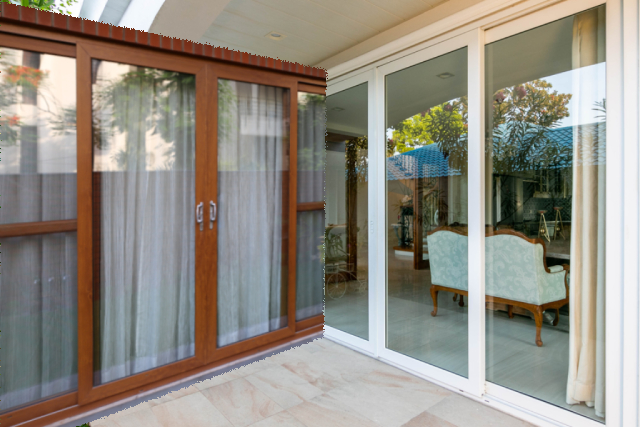Exploring Aesthetic Freedom in the uPVC vs Wooden Windows Debate
When choosing the perfect windows for your home or project, one of the most important yet underestimated decisions is colour. Beyond function, windows frame how we see the world — and how the world sees our space. Whether you’re going for bold contrast or seamless integration with your façade, the colour palette you choose plays a vital role.
In the uPVC vs wooden windows debate, colour flexibility becomes a defining factor. While both materials bring their own advantages in performance, insulation, and maintenance, their approach to colour is dramatically different.
Let’s explore how colour choices vary between uPVC and wood — and how that affects design freedom, longevity, and visual appeal.
Understanding the Basics
Before we dive into colour specifics, let’s quickly recap the two materials:
- uPVC (unplasticised polyvinyl chloride): A durable, low-maintenance, thermally efficient material used in modern window systems.
- Wood: A traditional, natural window material known for its timeless beauty, insulation capabilities, and craftsmanship.
Both are widely used in residential and commercial construction, but when it comes to colour selection, they offer vastly different experiences.
Colour Options in uPVC Windows
1. Factory-Finished Shades
uPVC windows typically come in a range of pre-finished colours — chosen and applied during manufacturing using foil lamination or extrusion techniques. These finishes are:
- UV-resistant
- Fade-proof
- Scratch-resistant
- Low-maintenance
Popular colour options include:
- White (the classic default)
- Black or Anthracite Grey (for modern minimalism)
- Woodgrain Laminates (to mimic timber)
- Beige, Walnut, Golden Oak (for warmer traditional looks)
These colours are applied using heat-bonded foil wraps that are highly durable and weather-resistant.
2. Limitations
While uPVC offers clean, consistent finishes, its customization potential is limited compared to wood. If you want a very specific tone (say terracotta, sea green, or deep wine), your options may be constrained by manufacturer availability.
You also can’t paint uPVC windows easily — most paints won’t adhere well, and even those that do may void your warranty or wear poorly over time.
Colour Options in Wooden Windows
1. Unlimited Paint and Stain Flexibility
Wooden windows are incredibly versatile when it comes to colour. They can be:
- Stained to showcase natural grains
- Painted in virtually any shade
- Distressed, aged, or polished for special effects
Whether you want pastel tones, bright pops of colour, or deep earthy hues, wood is a natural canvas for creativity.
2. Repaint and Refinish as Needed
Unlike uPVC, wood can be repainted or refinished multiple times, making it ideal for evolving interior and exterior design themes. You can:
- Refresh colours with changing trends
- Correct wear and tear
- Match new additions (like doors or trims)
This makes wood the go-to material for heritage homes, boutique projects, or anyone who loves customization.
Aesthetic Considerations: uPVC vs Wooden Windows
| Feature | uPVC Windows | Wooden Windows |
| Range of Colours | Moderate (20–30 shades) | Unlimited (any paint/stain) |
| Natural Texture | Simulated (woodgrain foil) | Authentic wood grain |
| Consistency | High — all pieces are uniformly coloured | May vary due to wood grain & finish |
| Custom Matching | Limited | Fully customizable |
| Repainting Option | Not recommended | Easy and repeatable |
| Best for | Sleek, low-maintenance, modern homes | Heritage, luxury, or bespoke projects |
Durability of Colour
Colour vibrancy and longevity are key factors in choosing window finishes. Here’s how they stack up:
uPVC:
- Highly UV-resistant coatings ensure colour doesn’t fade easily, even in harsh sun.
- No need for repainting.
- Foil laminates maintain their original colour for decades with minimal upkeep.
Wood:
- Paints and stains may fade over time due to UV and weather exposure.
- Needs regular refinishing (every 5–7 years depending on conditions).
- Natural ageing (patina) can be a desired aesthetic for some.
Sustainability and Visual Authenticity
- Wood offers a warm, authentic feel — ideal for homes where architectural heritage or biophilic design is a priority.
- uPVC offers a clean, synthetic aesthetic, best suited to contemporary minimalism or cost-conscious projects.
If sustainability is a priority, FSC-certified timber windows treated with low-VOC paints can be a greener option than uPVC. However, recyclable uPVC systems are also becoming more common.
Matching Interiors & Exteriors
Both uPVC and wooden windows now come with dual-colour options — one shade for the inside, and another for the outside. This is especially useful when:
- You want a dark exterior frame but a light interior for brightness
- Your façade and room décor demand different colour palettes
uPVC dual-colour options are available but fixed during production, whereas wooden windows can be repainted later, offering more future-proofing.
Final Thoughts: Which Material Wins on Colour?
If your priority is rich, customizable colours, unique finishes, and long-term repainting flexibility, wooden windows win hands down. They offer unparalleled creative control and character.
However, if you’re after consistent finishes, low maintenance, and factory-controlled perfection, uPVC windows are the more practical and durable choice — especially with modern laminates that closely mimic real wood tones.
In the uPVC vs wooden windows debate, colour choice isn’t just about aesthetics — it’s about flexibility, function, and how much involvement you want over time.
Need help choosing between uPVC and wooden windows?
We offer design consultations and material comparisons tailored to your space, climate, and style preferences.

